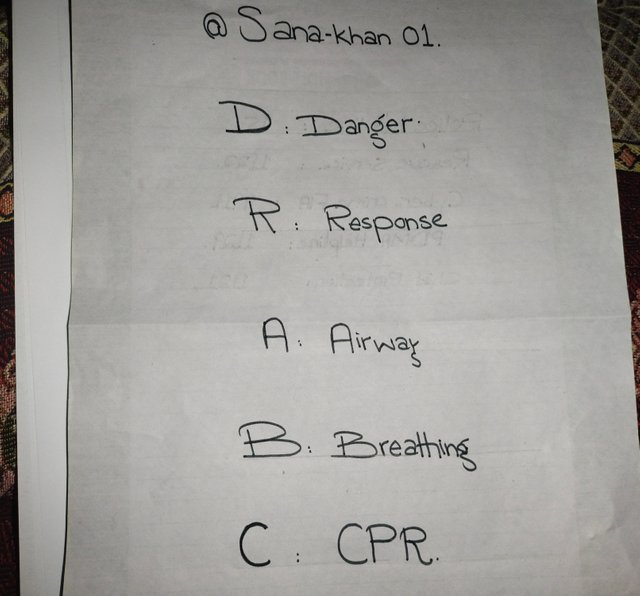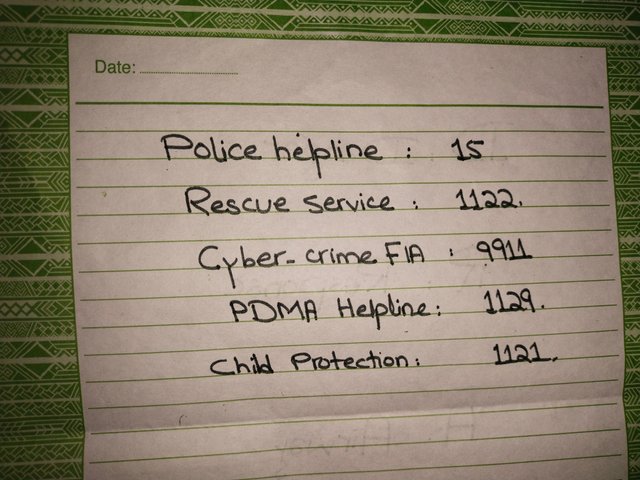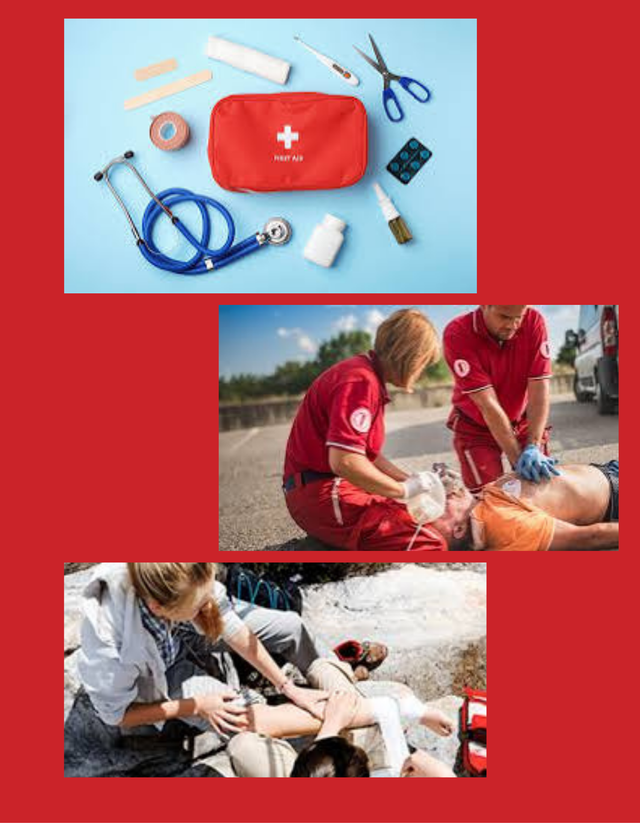SLC-S21W1 | Empowering Life-Saving Skills: A Guide to First Response and Basic First Aid.
Assalam O Alaikum.
Emergencies can happened at any time and knowing basic first responses skills can help us handle these tough situations. I liked to shared a personal experience where i had to use my knowledge of first aid to assist someone as well as an imagined scenario to show how i would act as the first responder in an accident. Through these stories i hope to show the importance of first aid skills in saving lives.
Share your any experience of your life, in which you faced the emergency that could be handled by your own only if you know the basic first response skills?
One time i faced a situation where my knowledge of first aid made a big difference. There was a patient experiencing ischemia a condition where blood flow is reduced often causing chest pain or discomfort. This was a serious emergency and i had to stay calm to think clearly. I made sure the patient was in a comfortable position to help reduce the stress on their heart. I closely monitored their symptoms like their breathing and pulse while waiting for medical help to arrive. This experience taught me the importance of quick and careful action. Even though i was not a doctor knowing some basic response skills helped me stay calm and provide initial support to the patient.
Share your any experience of your life, in which you faced the emergency that could be handled by your own only if you know the basic first response skills?
I am walking home when i witness a road accident between a car and a motorcycle the motorcyclist is lyings on the road not moving and theres blood coming from his leg. He appears to be unconscious. I quickly realize that as the first responder it’s my responsibility to help until emergency services arrive. To start i take a deep breath to stay calm which helps me think more clearly in this critical situation. I look around to make sure its safe to approach and that theres no additional traffic that might cause more harm. Once i feel secure i move closer to the injured man.
The first thing i check is if he’s breathing. I carefully lean down to feel for his breath and watch his chest for any movement. Thankfully hes breathing but he’s still unconscious. Remembering my basic training i know i need to keep his head steady and avoid moving him unless its absolutely necessary as moving could worsen any hidden injuries especially to his spine. Next i focus on his leg which is bleeding heavily. Heavy bleeding can lead to serious blood loss so i know i need to act quickly. I find a clean cloth in my bag and press it firmly against the wound to help slow the bleeding. As i keep steady pressure i raise his leg slightly which can help reduce blood flow from the injured area.
While i am managing the bleeding i pull out my phone and call emergency services. I clearly describe the location and explain the situation mentioning that the man is unconscious and bleeding from his leg. Providing clear information helps the emergency team prepare before they arrive. As i wait for help i continue holding pressure on the wound and keep checking his breathing. A few moments later the injured man starts to show signs of movement. I speak softly and reassure him that help is on the way. Staying calm and offering comforting words can help him feel less afraid even if he’s still a bit confused.
Soon i hear the ambulance approaching. When the paramedics arrive i explain everything I have done to keep the man stable like pressing on the wound and checking his breathing. They thank me and take over and i feel relieved knowing that i did my best to help until professionals could arrive.
Draw or Create an engaging illustration/flowchart of DRABC protocol.

Write down the numbers of emergency services of your country?

Conclusion.
This experience shows how important it is to know basic first aid skills. Whether dealing with ischemia or an accident staying calm and using simple techniques can make a big difference in someone’s life. I hope my experiences inspire others to learn first aid so we can all be ready to help when emergencies happen.
I am inviting friends @amjadali00 @isha-rehman @hamzayousafzai


Student Name: @sana-khan01
Time of checking: Within 24 hours of the homework
Overall Grade: [4/10]
Plagiarism Check: Pass
AI Use: No
General Feedback: Your performance on this assignment was quite poor. It’s clear that the understanding of the DRABC protocol and the correct procedures for responding to emergencies needs significant improvement. When learning first aid, it is essential to be precise and follow the sequence accurately to ensure the best possible outcome. I strongly recommend thoroughly reviewing the material again to build a more solid foundation in these essential skills.
Thank you.
Regards,
@abdu.navi03